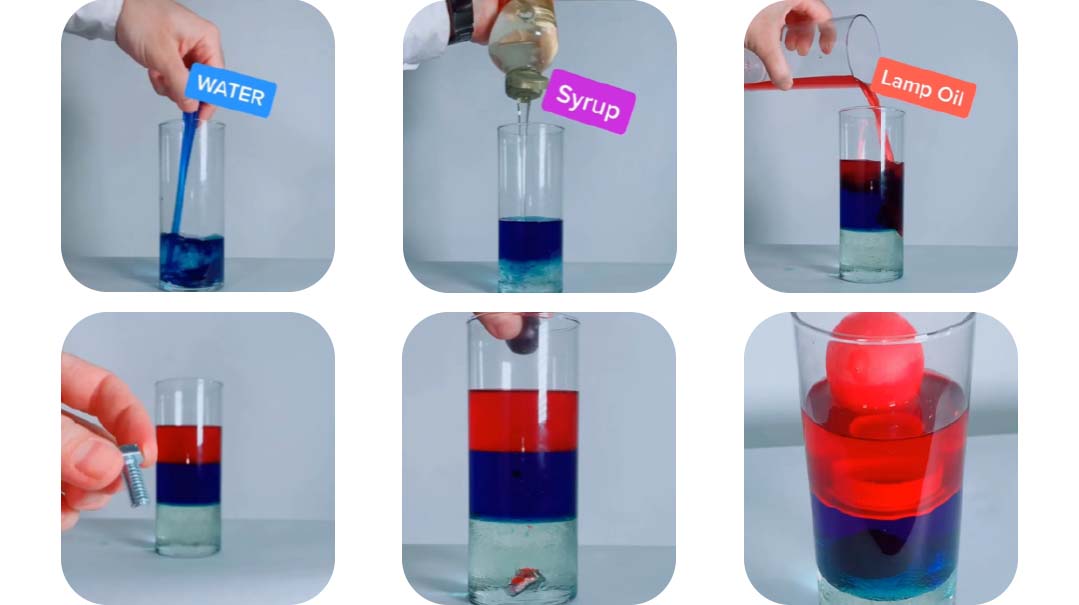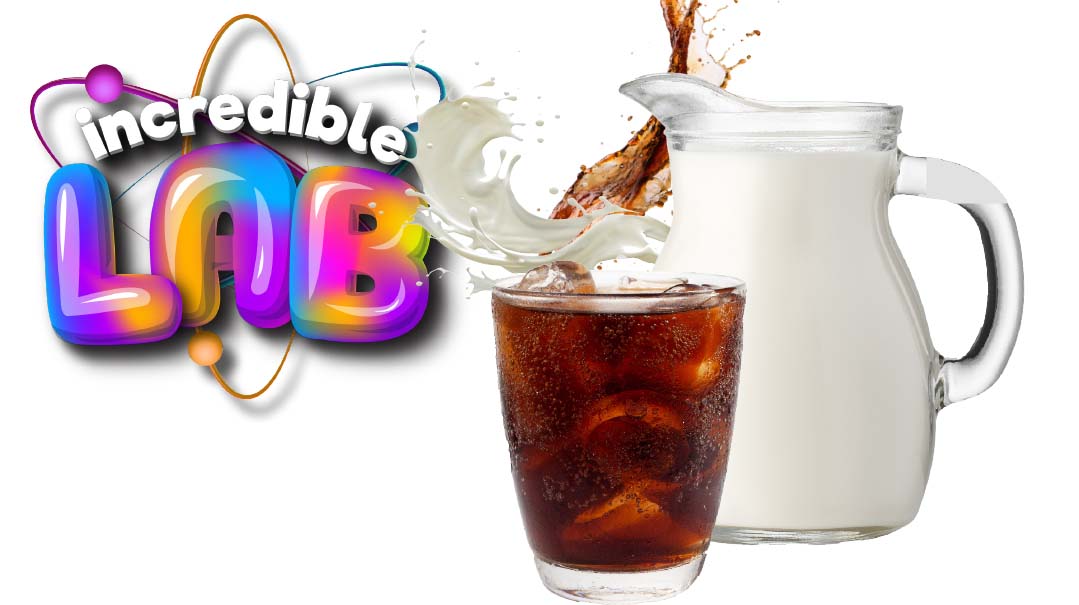Density Tower

In this Incredible science experiment, you’ll see how three different liquids can stack up — and stay on different levels

Photos: Yochanan Ghoori
Some things are heavier than others. We all know that! But did you know that objects have different densities? Density is the mass of a substance compared to its volume, so something with a lot of matter — or molecules — in a certain amount of space is dense, whereas something with less matter in the same space is less dense. An example would be a rock and a piece of Styrofoam the same size. The rock is denser than the Styrofoam.
In this Incredible Science experiment, you’ll see how three different liquids can stack up — and stay on different levels. It looks like magic, but it’s really just density at work. Take the experiment further by dropping different objects into your tower to see how — and where — they float.
You will need:
water (with food coloring, optional)
corn syrup
lamp oil*
cup, drinking glass, or vase
spoon or skewer, optional
small objects, such as a screw or bolt, grape, dice, bottle cap, ping-pong ball, and so on
*I had some leftover lamp oil from Chanukah, which I colored with lamp-oil coloring. It looks cool, but it’s not necessary. Clear is fine!
How to do it:
- Fill a cup (or drinking glass or vase) about ⅓ of the way with water. Add food coloring if you like.
- Pour an equal amount of corn syrup into the cup with the water. It will sink to the bottom because it’s denser.
- Add the lamp oil. It will float to the top because it has the lowest density of the three liquids.
- Take a moment to admire your density tower. You can even stir it with a spoon or skewer and watch it separate into layers again.
- Now start experimenting with your objects. Drop in a screw or bolt, and watch it sink to the bottom.
- Try dropping in a grape or a single die. This should float on top of the corn syrup.
- Take the plastic cap from a bottle of soda or water, pushing it upside down into the lamp oil so it fills with oil. It should float on top of the water.
- Finally, drop in a ping-pong ball. Is it floating on top of the oil layer?
Take it further
Look around for other small objects you can drop in and observe (think erasers, pen caps, paper clips, corks, and the like) and see what you can get to float in the various layers.
Remember: It’s not necessarily how heavy an object is that makes the difference; it’s how dense it is.
Ever Hear This One?
There’s a famous story about the ancient Greek philosopher Archimedes (Ahr-kih-ME-dees). No one knows if it’s really true or not, but that doesn’t make the tale any less popular!
The king at the time, King Hiero, was suspicious that his goldsmith was stealing gold and was using a cheaper metal in its place. The king asked Archimedes (probably because Archimedes had a reputation of being really smart) to figure out if the goldsmith was a thief or not — and whether a crown he had made Hiero was real gold or fake.
It was a tough problem. But one day, while Archimedes was taking a bath, he realized he could figure out the volume of the object by measuring the quantity of water it displaces. Then he could divide the weight by the volume to determine its density. Then the density of the crown could be compared to the density of pure gold.
Archimedes was apparently so excited that he jumped out of the bath and ran around shouting “Eureka!” (That’s Greek for “I found it!”)
And no, the crown was not pure gold. The goldsmith was a thief!
Lesson one: Water can help you determine an object’s volume — and density. Lesson two: When all else fails, take a bath!
A pound of feathers and a pound of lead weigh the same: one pound. But a pound of feathers takes up much more space than a pound of lead because the feathers are less dense than the lead.
A ship can float — even if it’s made of iron — because the interior is filled with air, which decreases the vessel’s density.
The relative density of one thing to another determines whether it will float, so a piece of wood will float if it’s less dense than water.
Water is an exception to the temperature rule. Ice is less dense than liquid water. That’s why ice floats.
Changing the temperature of an object usually changes its density. As temperature decreases, density usually increases.
(Originally featured in Mishpacha Jr., Issue 881)
Oops! We could not locate your form.





